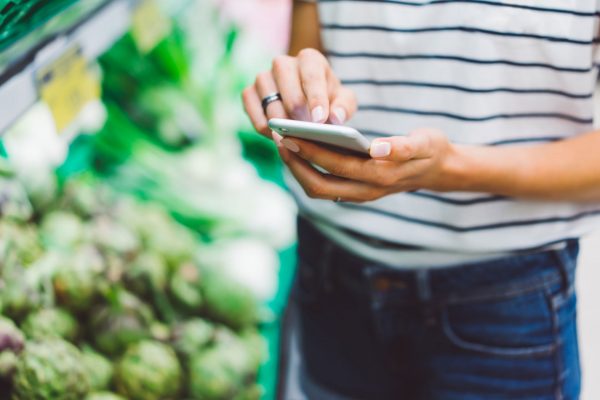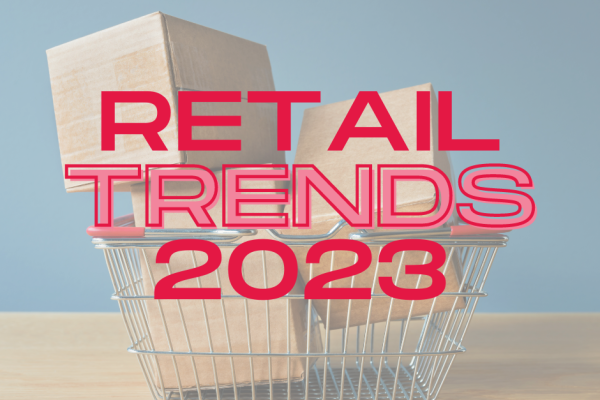Mobile commerce market share went over 70% in 2020 (compared to 52.4% in 2016) and is expected to reach 73% in 2021. Consequently, online business owners should take a closer look at that channel of sales. One of the most popular ways to increase your m-commerce engagement is to create and promote a mobile application. What do you have to know about apps and how do native apps boost your sales?
Truth be told, a successful app relies on its functionalities and capabilities. There exists no one universal list of functions or solutions an app must have. Naturally, it should be useful and user-friendly, but what the terms actually cover depends on a number of factors, such as:
- Your particular branch of the industry and the type of products on offer
- Functions used in the desktop version
- User groups you target
What to do to increase sales with a mobile app? As you implement a dedicated strategy and practices, your mobile app will serve as an excellent instrument to boost your revenues. To get there, you must first focus on a few milestones.
Why have a mobile app
In simplest terms: because it results in bigger income. As you know, the m-commerce market is growing year by year, and customers simply expect solutions tailored to mobile devices. As many as 60% of people worldwide own a smart phone, and nearly 70% of mobile device users aged 16-64 use mobile shopping apps. It would seem that active participation in m-commerce has become a rule, rather than a curious alternative. The COVID-19 pandemics has but sped up the process. 14% of Poles decided to shop online for the first time ever precisely due to the pandemic restrictions.
Why customers love mobile shopping apps
There are several reasons why customers love mobile shopping apps:
- Convenient and time-saving solutions (24/7 shopping, from anywhere around the world bypassing the need to visit a physical store or use a computer)
- Quick access to new products and offers
- Browsing all products on offer fast
Types of mobile shopping apps
Mobile apps can be categorised into a few groups. Those most often used in e-commerce are:
- Standard shopping apps – one application presents the offer of a single store. Just step in and shop.
- Booking apps – apps that serve as the middleman between you and event organizers or accommodation providers.
- Aggregator apps – apps that showcase the offers of different stores. These are for example price comparison engines.
- Auction apps – which act as a platform for auctions. These range from Allegro and eBay, to Accelevents, Handbid or LiveAuctioneers.
Different business models for m-commerce
Mobile commerce makes room for various forms of activities including various groups of customers. Companies planning to develop a mobile shopping app might consider several options:
- B2B: this model delivers products or services exclusively to other businesses. Wholesalers or cash and carry stores feature in this category.
- B2C: this is the most popular model in e-commerce. Under this model retailers sell their products to individual buyers.
- C2C: this model consists in trade between individuals. OLX or Vinted belong to this category.
- C2B, or Consumer to Business. In short, individual customers submit requests for quotation or offer their products or services - to which businesses respond. Case in point: Oferteo, Fixly.
Road map to a successful mobile app
IDEAS AND MARKET ANALYSES
First of all, make sure you have a clear and precise vision. Let's-have-ourselves-a-mobile-app attitude is not good enough. You need to know exactly what it is that you want to achieve and how your customer are to benefit from the app. If you're struggling to answer, the best way is just to ask your customers directly. Use your social media or a newsletter to inquire about their expectations. Lear what your customers find wanting and what functionalities they value.
RELIABLE TECHNOLOGICAL PARTNERS
Few businesses are free to create mobile apps in-house. Even business tycoons such as Apart decide to outsource IT services. Look for a reliable agent to help you design and then develop your application. Experienced m-commerce agents often offer services beyond sheer technological support advising businesses every step of the way.
THE BEST UX
The rule of the thumb is for an app to both speed up and facilitate browsing your offer and purchase processes on mobile devices. This usually calls for an in-depth analysis of your purchasing process to shorten or simplify it as much as possible. Apps that provide a positive experience are chosen more readily and used daily.
AGILE MARKETING
Let's not kid ourselves, a mobile app is unlikely to succeed unless it's backed up with proper marketing. You might want to consider several marketing strategies, such as:
- Affiliate marketing /loyalty program: encourage customers to shop more using extra perks.
- Retargeting: remind customers about previous search results and products viewed.
- Customizing: mind you, customers detest being treated as statistical figures. Ensure good solutions that guarantee personalized offers based on customer search history, previous purchases and shopping behavior. Show your customers you see them as individuals, not a faceless mass.
CONSIDER SUBSCRIPTION PROGRAMS
Subscription programs are a fairly new strategy in e-commerce, but one that has been gaining ground quickly. In a nutshell, the idea is to attract and keep as many regular customers as possible. The service is based on a monthly payment fee. Subscription fees are automatically charged to a designated account and customers need not take any further actions. Subscription programs perform well in case of items which belong to such categories as food, beauty products, animal food, dietary supplements, baby products and alike. This model offers a wide range of opportunities.
A recipe for a perfect mobile apps
Sadly, there is no such recipe. However, there are a few steps to consider which can help you achieve success in mobile commerce. These steps include:
PLAN YOUR BUDGET WELL
E-commerce and m-commerce offer practically limitless possibilities. If this is to be your first app, be moderate. It's actually better to create an app and develop it further if it fails to attract customers rather than spend a fortune on an app having little to no guarantee of its commercial success. Also, applications that run under the SaaS model, or Software as a Service, might be worth a try as they require no significant initial outlays while still delivering fundamental functionalities.
START WITH A PROTOTYPE
The world of IT often refers to a Minimum Viable Product (MVP). MVPs are simply prototypes which help demonstrate a preliminary version (fitted with main functionalities, though) of an application to customers or investors. Once an MVP version is accepted, you can start working on a full version. This work framework allows businesses to verify solutions prior to making any large financial investments.
CONSIDER OPERATIONAL SYSTEMS
Nowadays, Android and iOS are the two market leaders on the mobile market. It would be ideal if your app ran on both platforms. You have two choices here:
- You could decide to use native apps, which are applications created for each operational system separately. Mind you though, this means that you will actually need to develop two apps. This solution is both more expensive and time-consuming.
- You could also make use of multiplatform technologies. One such example is Flutter. The Flutter framework makes it possible to build a mobile application using a single source code that is both Android and iOS friendly.
To help you decide, we recommend reading our article reviewing native apps and Flutter-based applications.
DESIGN YOUR SHOPPING CART ABLY
A clear, intuitive and, above all, a simple pathway to finalize the sales and manage the shopping cart will drive your convergence rates high. Here, let us briefly pinpoint the growing popularity of one-click purchasing. By allowing your customers to sidestep shopping carts and move directly to payment you ensure quick transfer, freedom of choice (customers can add products to a wish list anytime), and most importantly you reduce the cart abandonment rate.
ENABLE PUSH NOTIFICATIONS
Thanks to PUSH notifications you keep in touch with your customers and can remind them to shop, use a voucher or take advantage of limited special offers. Customers often install an app, and forget its existence after just one use. PUSH notifications can help you maintain their interest.
VARY PAYMENT METHODS
One of the fundamental rules of online shopping dictates that customers should follow the simplest possible pathway to finalize the purchase. To decrease the number of abandoned carts you must make sure your app users have access to a wide range of quick mobile payment methods at hand.
Creating a good mobile app is a complicated process, often spanning several months of work. However, if you do succeed, the return on your investment will be quick, while you additionally gain respect and loyalty of your customers. If you are looking for a reliable partner who can guide you through the entire process of developing apps, we are here for you. We will be more than happy to show you where to begin creating your own app and answer all your questions.
- https://www.statista.com/statistics/806336/mobile-retail-commerce-share-worldwide
- https://datareportal.com/reports/digital-2021-global-overview-report
- https://eizba.pl/najnowszy-raport-e-izby-omni-commerce-kupuje-wygodnie-2020
- https://footwearnews.com/2019/business/retail/mobile-shopping-app-ecommerce-business-tips-1202786356




